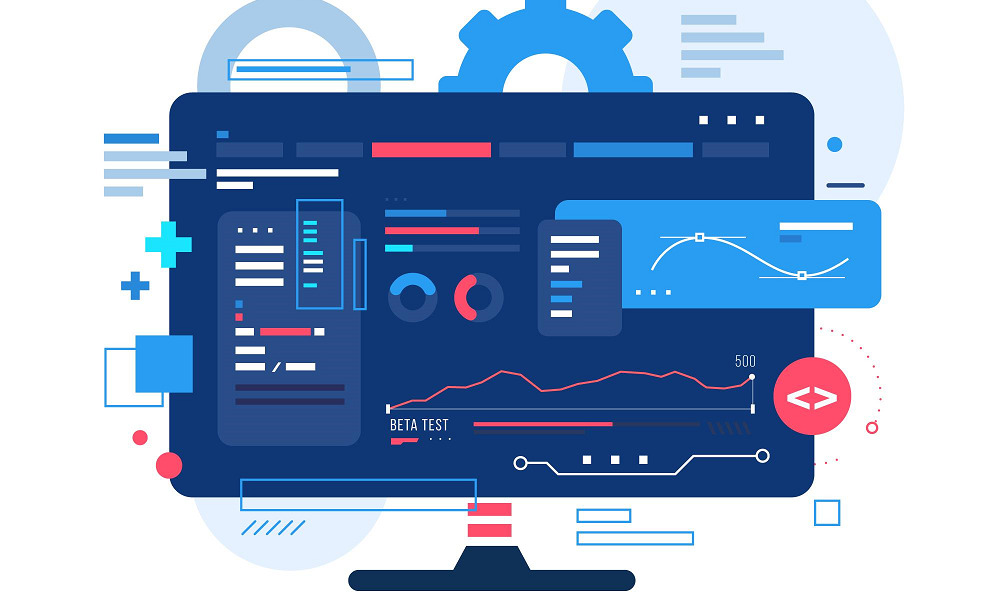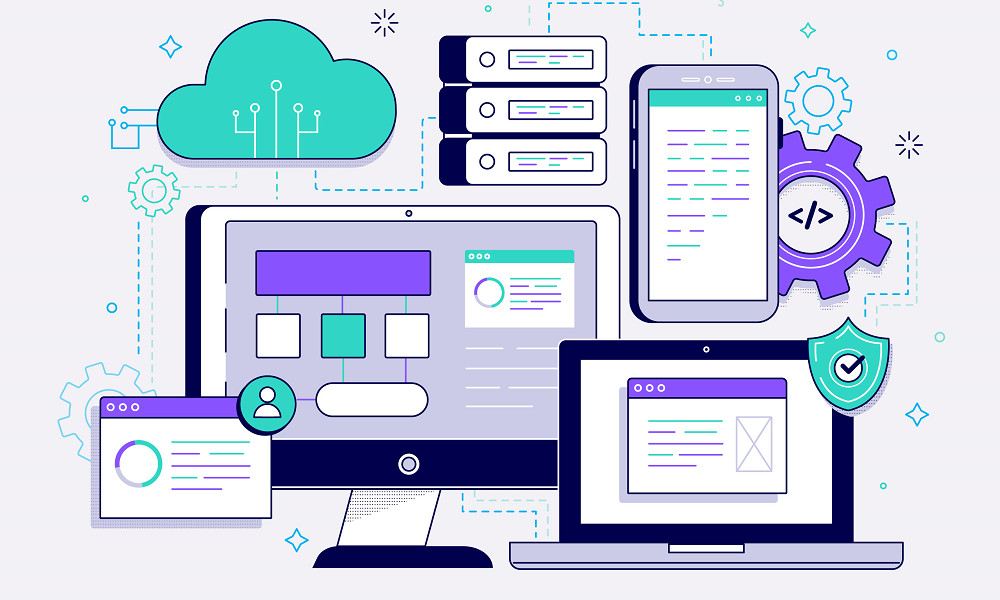Reviews
Future-Proofing Your Business: The Long-Term Rewards of Application Modernization

In more recent times, evolving at the pace of the technological world is becoming impossible to keep up with without future-proofing your business. Modernizing legacy applications can provide a set of major competitive advantages for companies today and in the years to come for those who rely on software applications to conduct their operations.
What Does It Mean to Modernize Applications?
Application modernization means bringing the existing software applications to the latest technology and architecture. This enables companies to increase application functionality, strengthen security, increase flexibility, reduce costs and put themselves in a position to innovate.
In particular, modernization includes activities that involve application replatforming to cloud infrastructure, application rearchitecting from monolithic apps into microservices, the introduction of new technologies such as artificial intelligence and machine learning, and so forth. Modernization is chosen by companies based on their own strategic goals. You can follow the link to learn more about various application modernization solutions.
The Case for Application Modernization
There are many companies that have critical business systems and software that were created 5, 10 or even 20+ years ago. These legacy applications are vital to the business, but they can prevent the business from becoming a technological and competitive leader. Legacy apps typically suffer from:
- Inflexibility. Hard-coded, monolithic architectures make changes time-consuming and expensive.
- Security risks. Older programming languages and platforms can have major vulnerabilities.
- Scalability challenges. It’s difficult to add capacity for growth and spikes in usage.
- Integration issues. Connecting legacy systems with modern technologies can be complex.
- Soaring maintenance costs. An absence of developers skilled in older languages drives up costs.
- Lack of agility. Lengthy release cycles inhibit the ability to innovate quickly.
These limitations mean legacy applications struggle to meet the performance, customer experience, and innovation benchmarks now expected by the market. The costs and risks of relying on outdated technology continue to rise dramatically over time.
That’s why 83% of IT leaders say application modernization is essential for driving business growth today, calling it a competitive necessity for their industry. The companies that modernize position themselves to extract maximum value from innovations in cloud, AI, IoT, and more.
The Long-Term Rewards of Committing to App Modernization
Making significant investments in application modernization initiatives pays long-lasting dividends across critical business dimensions – from customer experiences to costs to future readiness. The specific benefits include:
Enhanced Agility and Efficiency
Microservices and containerization have been enabling modern technology practices for faster and more flexible agile application development. Teams can update certain components in hours or days instead of months-long release cycles of monolithic legacy apps. This means that only a company adapting to command and revolting against hierarchy will be agile enough to experiment more, release features faster, and continuously improve its products based on the feedback and behavior of its users.
Application modernization also introduces major teamwork improvements for the developer and IT ops teams. By implementing DevOps automation, cloud infrastructure, and leading programming languages, teams can eliminate time-draining manual tasks and bottlenecks. Software teams gain efficiency through better collaboration and visibility across the development lifecycle. They can focus less on “keeping the lights on” and more on innovation.
Significant Cost Reductions
Migrating legacy applications to cloud platforms like AWS, Google Cloud, and Microsoft Azure yields considerable ongoing cost savings in most cases. Buying, owning and maintaining hardware and facilities are all eliminated expenses by using cloud infrastructure. Cost efficiencies provide a budget for investing in programs that reach customers.
It furthermore decreases costs for lifetime application. Microservices and containerized architecture allow teams to scale resources very granularly based on demand. Companies do not overprovision (and overpay) for unused capacity. Furthermore, such modern platforms simply make application monitoring and management easier through automation. This means that fewer employee hours are needed for routine application maintenance in the long run.
According to IBM research, organizations save an average of 30-50% in infrastructure and operations costs by modernizing legacy applications. Those savings drop directly to the bottom line.
Stronger Security and Compliance Posture
Older programming languages, frameworks, and platforms often contain vulnerabilities that leave companies exposed to cyber threats. By replatforming legacy applications using secure modern tech stacks, organizations strengthen protection against attacks, malware, data breaches, and compliance failures.
Implementing microservices architectures further enhances security by isolating functions into independent components. That way, if one service gets compromised, it does not provide access to entire monolithic application codebases. The reduced attack surface area makes applications far more secure overall.
Modern APM monitoring tools also provide companies with a better view of application changes, performance, and user behavior. It provides improved visibility, therefore speeding up the time needed to detect threats and bring in an appropriate response.
As 54% of IT leaders indicate that security and risk management upgrades are a major cause for embarking on application modernization initiatives, an upgrade of existing security and risk management capabilities is also a motivation. Over time, the threats and the consequences they cause from security failures will also increase.
Higher Quality Customer Experiences
Web and mobile simple applications are better performed in modern times. New programming languages, frameworks, software platforms and architectural pattern allows companies to build software that loads faster, runs more reliably and is up to these dates between devices.
Integrating AI/ML technologies provides opportunities to optimize further and personalize applications based on how actual users engage with features. Companies create stickier digital experiences that keep customers coming back.
Because updated applications require less intensive maintenance, issues get resolved faster. Bugs and performance lags get fixed in hours or days rather than sitting unattended for weeks. Customers enjoy much higher uptime and reliability.
These quality and speed advantages lead directly to better customer satisfaction, engagement, and retention over the long run.
Enhanced Readiness for Emerging Technologies
There is no reason to believe that technological change will not continue at its current pace. However, in the current decade, the world will see the impact of cloud computing, 5G networks, IoT sensors, AI and ML algorithms, and AR and VR solutions, along with thousands of others, which will utterly transform consumer and enterprise technology.
The integration of support for emerging innovations is extraordinarily tedious and expensive because of legacy application architectures. However, modernized cloud-native applications can connect with new technologies through APIs and microservices much better than traditional applications. Companies try to position themselves to exploit whatever is the cutting edge in their markets.
Businesses that modernize establish advanced foundations for technology adoption that their competitors may struggle to match. The result is first-mover opportunities and outsized competitive advantages when leveraging tech innovations deemed critical for their industry’s future.
According to Red Hat, 95% of executives believe application modernization capabilities will be vital for unlocking the potential value of new technologies over the next 3-5 years.
Making Application Modernization a Priority Now

Given the major current and future benefits detailed above, application modernization may represent the single most impactful step enterprise companies can take from a technology strategy standpoint. Here is a recap of why modernizing legacy applications needs to become a boardroom priority:
- Avoid soaring costs and risks related to reliance on outdated legacy applications
- Drive better agility, efficiency, and productivity within software delivery teams
- Reduce infrastructure and operations costs significantly through cloud migrations
- Bolster security and compliance measures across the organization
- Deliver superior quality digital experiences that increase customer loyalty
- Establish adaptable foundations to take advantage of innovations in AI/ML, IoT, 5G, and more
The companies that make smart investments in strategic application modernization initiatives over the next 3-5 years will gain sustainable competitive advantages in the long run.
It is time to work hand in hand with subject matter experts in modernization consulting and solution providers. They can be used to assess the current legacy environments, identify high-value modernization opportunities related to business goals, and execute ambitious but achievable multi-year modernization roadmaps.
Incremental refactoring approaches reduce the risks associated with the “big bang” replacement. The different companies work on the most problematic legacy systems first but in a modular fashion, keeping the basics running. Modern platforms receive workloads that migrate gradually and incrementally over longer time horizons, and workloads are updated piece by piece.
With a clearly defined strategy combined with expert guidance, even large-scale modernization initiatives become much more manageable. The business gains and future technology readiness achieved are well worth the investments for most enterprise organizations.
In closing, here is some practical advice for technology and business leaders looking to chart application modernization journeys at their companies:
- Audit existing application portfolios and infrastructure to identify top modernization candidates based on business criticality, costs/risks, and modernization complexity.
- Define multi-year execution roadmaps oriented around delivering maximum business value through modernization at acceptable costs.
- Start small by refactoring components that drive most of the operational and development efficiencies. This builds institutional knowledge for expanding efforts.
- Leverage cloud-native technologies like containers and orchestrators to incrementally transition legacy apps while maintaining continuity.
- Invest continually in employee skills training/certification for modern software languages, frameworks, platforms, and architectures.
Application modernization is quite a doable thing with a proper strategy and assistance. Aggressive companies that lean into thoughtful legacy upgrades equip themselves for the greatest levels of agility, innovation capacity, cost and overall competitiveness both today and for years to come.

-

 World1 week ago
World1 week agoEthiopian volcano erupts for first time in thousands of years
-

 Health2 days ago
Health2 days ago8 kittens die of H5N1 bird flu in the Netherlands
-

 Legal7 days ago
Legal7 days agoUtah Amber Alert: Jessika Francisco abducted by sex offender in Ogden
-

 US News6 days ago
US News6 days agoExplosion destroys home in Oakland, Maine; at least 1 injured
-

 Health7 days ago
Health7 days agoMexico’s September human bird flu case confirmed as H5N2
-

 Legal3 days ago
Legal3 days ago15 people shot, 4 killed, at birthday party in Stockton, California
-

 World7 days ago
World7 days agoWoman killed, man seriously injured in shark attack on Australia’s NSW coast
-

 US News2 days ago
US News2 days agoFire breaks out at Raleigh Convention Center in North Carolina




